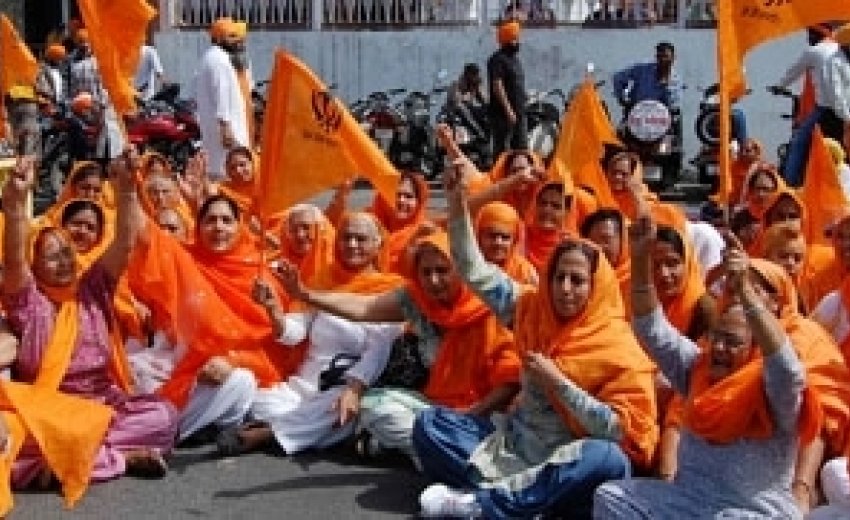I did everything in the pursuit of truth and justice. I even begged. But all this failed me. What else could I have done? There is a Punjabi saying that after 12 years, even a pile of manure gets to be heard. But for me, after 12 years, nobody is listening – this must mean that I am worth even less than manure.
---- Mohinder Singh, father of extrajudicial execution victim, Jugraj Singh as told to Human Rights Watch and Ensaaf.
In April we directly addressed the disquiet amongst Sikhs worldwide over the previously planned execution of Balwant Singh Rajoana. We explained the anguish so many rightfully feel over thousands of documented disappearances, extrajudicial killings, and torture endured by Sikhs in India.
Part II of this series will discuss the concept of impunity for these violations of basic rights.
“Impunity” may be defined as the institutional refusal to hold perpetrators of human rights violations accountable.
In addition to enduring mass violations of basic rights, Sikhs have lived with the pain of knowing that the perpetrators of these violations have not been held accountable for their actions. In part, it is this combination of violations and impunity for those violations which led to the mass protests of April 2012.
The Post 1984 Period
While 1984 is remembered with justifiable sadness in Sikh circles, the period from 1984 to 1995 saw the systematic, organized violation of the rights of tens of thousands of Sikhs.
Reports with titles like Protecting the Killers – A Policy of Impunity in Punjab, India by Human Rights Watch and ENSAAF; India: Break the Cycle of Impunity and Torture in Punjab by Amnesty International; Dead Silence: The Legacy of Human Rights Abuses in Punjab by Physicians for Human Rights and Human Rights Watch; and Twenty Years of Impunity by ENSAAF have been written about this troubling era.
Almost ten years after 1984, the US State Department’s Country Report on Human Rights Practices for India in 1993 chronicled the use of “extrajudicial killings”; “faked ‘encounter’ killings” and the use of “cash bounties” by the Punjab Police. The US State Department wrote then:
Extrajudicial executions were also encouraged by the Punjab government's practice of offering bounties for killed militants. The chief minister told the state assembly that over 41,000 such bounties were paid between 1991 and 1993; in some cases more than one person claimed credit for the same killing.
Similarly, in “Dead Silence: The Legacy of Human Rights Abuses in Punjab,” Physicians for Human Rights and Human Rights Watch reported the following:
The decade-long insurgency in the north Indian state of Punjab and the brutal police crackdown that finally ended it cost more than 10,000 lives. Most of those killed were summarily executed in police custody in staged "encounters." These killings became so common, in fact, that the term "encounter killing" became synonymous with extrajudicial execution.
In the same vein, Amnesty International, in a 1993 report called, “An Unnatural Fate: Disappearances and Impunity in the Indian States of Jammu and Kashmir and Punjab,” wrote:
Each year, scores of people “disappear” in Punjab from among the many thousands of political prisoners detained in the state. Official figures given by the Home Minister in March 1993 put the number of people then held under TADA [Terrorist and Disruptive Activities Act] in Punjab at 14,457; unofficial sources say several thousands more are held without trial under TADA and preventive detention laws in force in Punjab. State complicity in such practices is evident from a clear pattern of official cover-up. This involves officials routinely ignoring numerous letters expressing anguish for the life and safety of the “disappeared.” Cables from relatives to government officials reporting a “disappearance” and requesting immediate intervention also go unanswered.
Sadly, as chronicled in the 2007 report by Human Rights Watch and Ensaaf report entitled, “Protecting the Killers: A Policy of Impunity in Punjab, India,” the perpetrators of these mass abuses remain unpunished.
Conclusion
This is the continuing legacy of abuses in Punjab. The truth is that in Punjab, New Delhi, and elsewhere there are thousands of Sikh mothers, fathers, sisters, brothers, sons, and daughters who must go on living knowing that the pain of their loved ones has gone unacknowledged by society and government. They must go on living knowing that the abusers remain free.
In part three of our series on issues in Punjab, we will cover the period between 1995 to the present – where direct violations of human rights have subsided but underlying conditions of the people of Punjab have declined. Policies, social challenges and post trauma from the earlier shocks have led to a region strife with substance abuse, new economic barriers, quickly rising suicides and many other societal challenges.
To learn more, please visit the website and reports by:
Amnesty International
Human Rights Watch
Ensaaf
Physicians for Human Rights
The US State Department |
